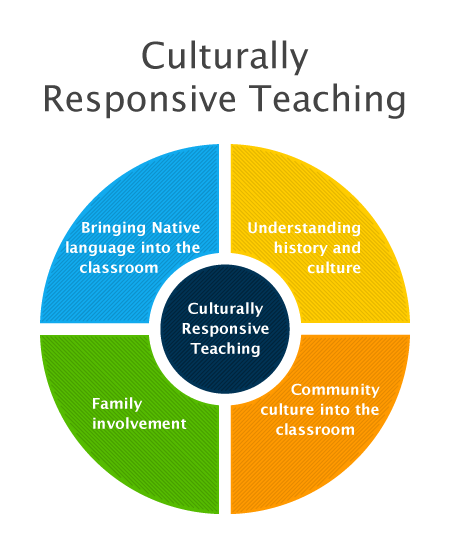“Who are my students?” -Kristen
THIS is the central question that we strive to build our assessment around to improve student learning. Not only should teachers know about their students as learners but also as people! What are their interests in school but also out of school? What is their ethnic background, their first language, their SES status, their hobbies, their favourite song and movie, their favourite subject and so on? Although we have been provided with an ample number of strategies we can carry out, I will provide three prime practices that I strive to achieve in my classroom.
1) Creating a Socially and Emotionally Safe Environment.
As Maslow proposed in his hierarchy of human needs, basic wants must be met before students can turn their attention to learning. After securing food, water, shelter, and safety from harm, people seek as their next most important needs affection, belonging, and esteem. In the process of coming to know students, a caring and interested teacher can develop rapport and trust not just between teacher and student but among students. This trust and acceptance creates a psychologically safe atmosphere in the classroom, which provides the security students need to adjust their minds to new experiences, and deep learning. A sense of belonging and being valued maximizes the chances that students will take such risks. Simple gestures such as learning proper pronunciation of each students’ names, greeting students in the morning, noticing small changes in their hair or outfit, conducting morning meetings as well as making an effort to celebrate the diversity that exists in your students, supporting all language learners, and accommodating to meet students learning, social and emotional needs are great ways to foster a safe place. Another crucial step as an educator in adopting a safe space for students is becoming culturally competent.
2) Culturally Responsive Pedagogy
Culturally competent teachers assure that the curriculum will be taught, that the curriculum will be delivered in a way that is responsive to the collective norms and experiences of the student population which in turn will enhance the class environment through the diversity and uniqueness that each student exhibits. Culturally responsive learning goes beyond a student’s culture and language but considers their self-esteem, sense of efficacy, cultural norms, social status within the class or group, life experiences, dispositions and attitudes, habits of mind, and their families. As educators, it is our duty to appreciate and celebrate all our learners including Indigenous Peoples, the minority class, the majority class, the ELL students, and the low SES students. When we know our students deeply, we are able to determine individual readiness for learning with greater accuracy and then pitch instruction more precisely. It can become overwhelming to keep track of all your students information collectively or individually. Therefore, my final practice is a solution to gathering all that data and information and monitoring and adjusting it throughout the year.

3) Developing Student and Class Profiles
This was a significant takeaway from Module 5 because I have yet to implement a class profile in my teaching practice. To help meet the challenge of coming to know your students, Chapter 4 of Learning for All-A Guide to Effective Assessment and Instruction for All students, Kindergarten to Grade 12 recommends developing class and student learning profiles to capture five important dimensions of learning identity: biological traits, cultural and societal factors, emotional and social influences, academic performance, and learning preferences. You won’t acquire all of this information at one time, but as you continue to collect and compile student data, a meaningful and useful learning profile should emerge.
Malcolm X once said “We cannot teach what we do not know and we cannot lead where we will not go.”
Going forward, not only will I be altering aspects of my teaching but also aspects of myself on a professional and personal level. Continuous professional development workshops and taking advantage of other opportunities to deepen my knowledge will be a small step I can take to enrich my teaching practice and stay up to date with the curriculum. In addition, I will strive to improve my understanding of all cultures in my class especially Indigenous culture and ELL students. Some ways I can incorporate culturally practices are using the talking stick (used in Indigenous culture) in my morning meetings after students understand the significance of it, rotating between different languages to greet students in the morning, displaying and reading aloud dual language books, using technology as a resource to skype elders of certain cultures whom we can all benefit from and celebrating cultural practices/events as they present themselves throughout the year. I will provide more differentiated learning opportunities for my students to allow them to expand their creativity when expressing their learning. For example, in the past I would assess students based on one type of project such as having them create poster boards. Presently, I would offer, expose and encourage them to utilize various techniques and methods to share their learning such as using technology (PowerPoint, brochures, Video clips, Show your learning apps, make a movie) oral presentation, booklets, sketch notes, and the list goes on (or methods the students come up with themselves). Most importantly, I will create digital class and individual profiles to deeply understand and collect important data on all characteristics of my students and fully appreciate them and meet their social, emotional, psychological and academic needs to the best of my ability.
http://www.edu.gov.on.ca/eng/general/elemsec/speced/LearningforAll2013.pdf
http://www.edu.gov.on.ca/eng/literacynumeracy/inspire/research/CBS_ResponsivePedagogy.pdf

I love your Malcolm X quotation (“We cannot teach…”) but I can’t find a reference for it. Did it come from a speech or something he wrote? I teach my student the importance of citation and I don’t want to use this without being able to tell them the source. Thanks!